Ray Exhibit
Cownose Ray
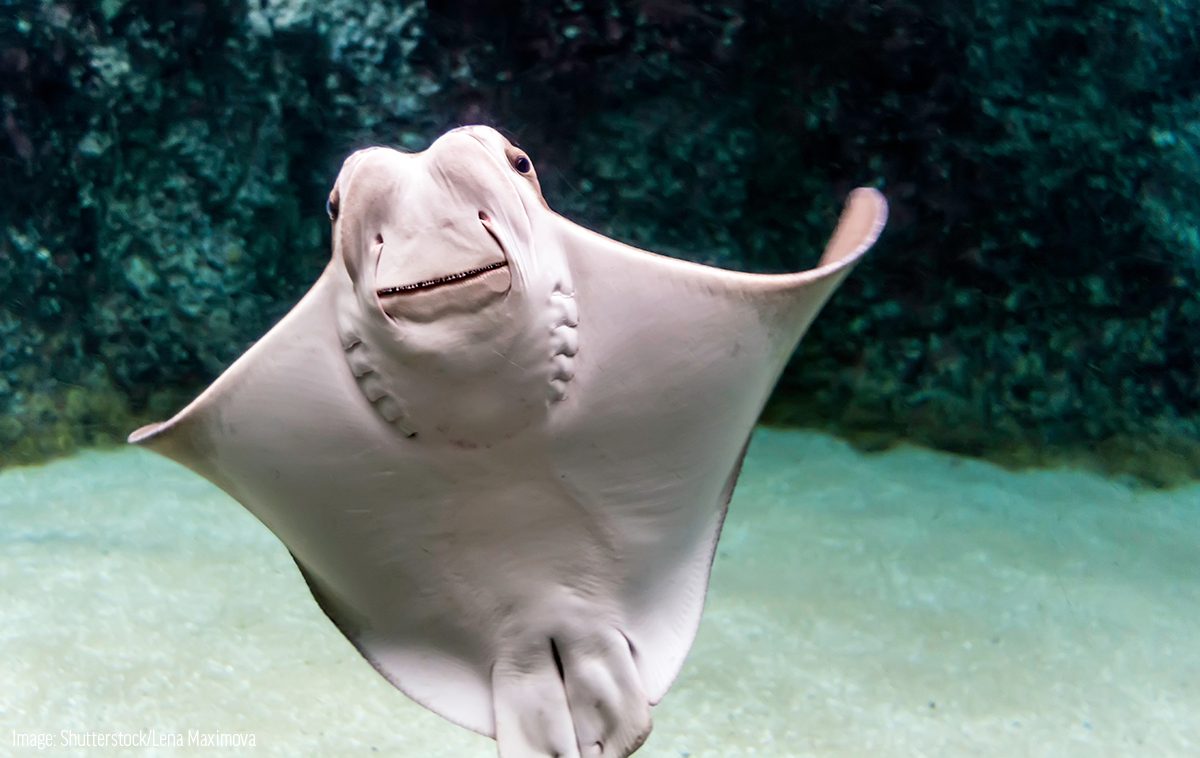
Diet: Carnivore including mollusks, crustaceans and small fish
Size: up to 3 feet
Weight: 50 pounds
Life Span: up to 18 years
The Cownose ray has a spine at the base of its tail that has a mild venom. They are able to use their pectoral fins, also called wings, to move sand to expose prey animals. Their teeth are flat and pavement like, called dental plates, to form tightly packed rows used to crush and grind prey. These teeth are continuously replaced as they fall out.
Cownoses have two modified fins on the front side to produce suction to draw food to its mouth
Atlantic Ray
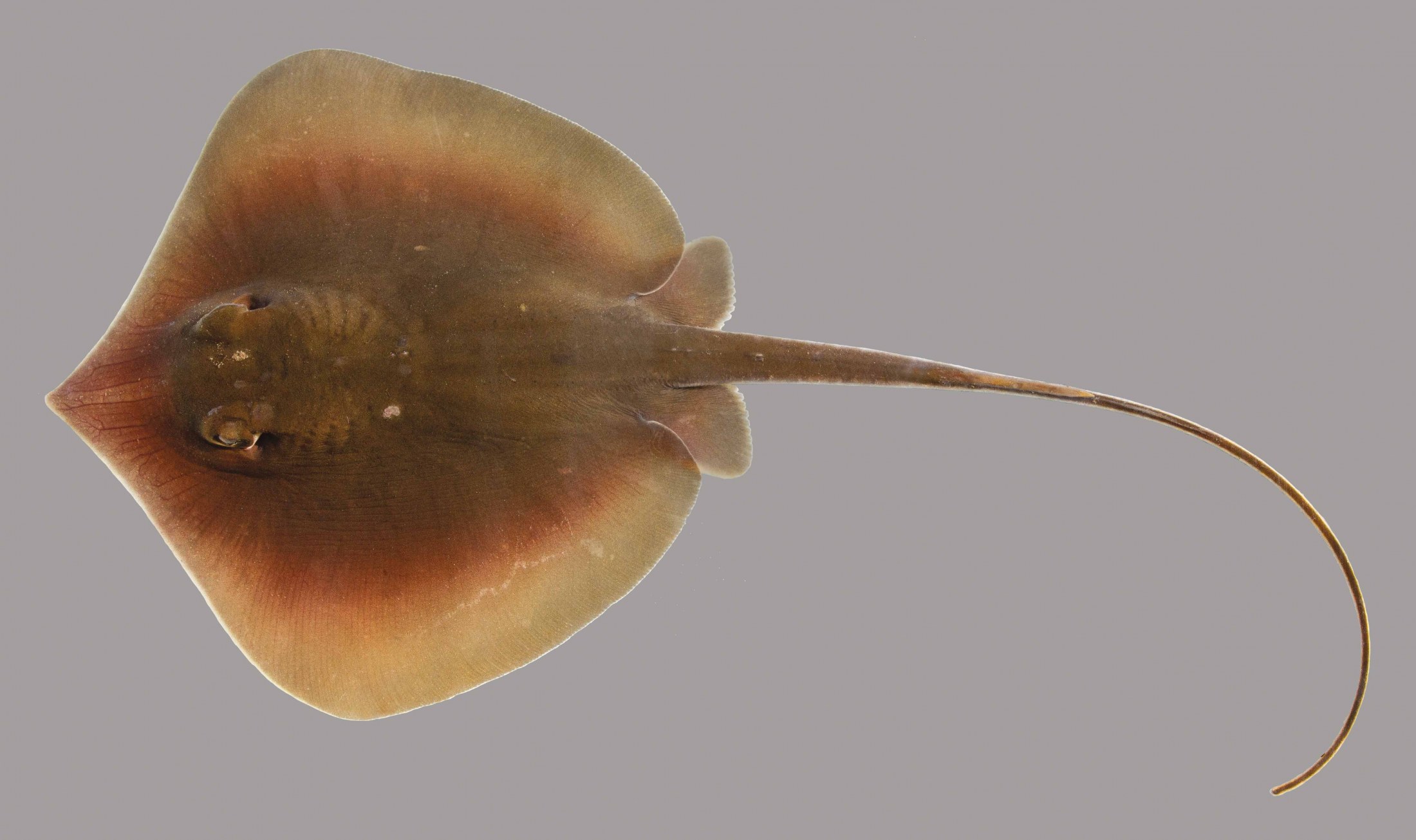
Range: West Atlantic Ocean
Diet: Carnivore including benthic invertebrates, tube anemones, crustaceans, and nereid worms
Size: 24 inches
Weight: 11 pounds
Life Span: 9 years
The Atlantic Ray is one of the smallest stingray species.
The Atlantic Ray lives in marine, brackish, and freshwater habitats from Chesapeake Bay to Mexico. There has been some reported in the Mississippi River.
Their teeth are rounded, with a flat surface used for crushing prey. Its tail is long and whip like with a serrated spine that is replaced annually.
California Ray
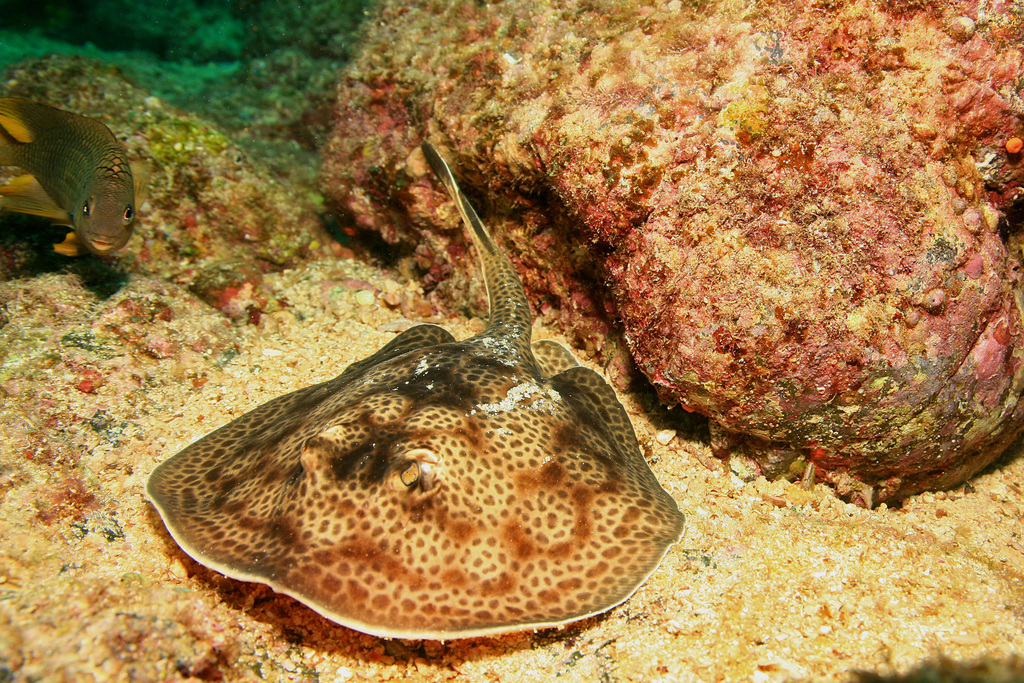
Range: Eastern Pacific Ocean
Diet: Carnivore including benthic invertebrates
Size: 12 inches
Life Span: 14 years
The California Ray is also known as the Little Round Stingray and is a species of round ray.
They have a venomous spine at the base of their tail that is thick and serrated. Their spine is periodically shed and replaced annually. Their teeth are small and diamond shaped. California Rays are able to use their pectoral discs to dig large puts to uncover buried prey
Horseshoe Crab

Range: Atlantic Ocean
Diet: Carnivore including worms and mollusks
Size: 14-19 inches
Life Span: 20 years
The name crab is misleading because they are not true crabs or even true crustaceans. Horseshoe Crabs are considered living fossils because of their origin of 244 million years ago.
Their mouth is located in the center of five pairs of legs. After the legs are the book gills which exchange respiratory gases and sometimes used for swimming.
Horseshoe crabs use hemocyanin to carry oxygen in their blood and the copper present in hemocyanin makes their blood blue. Their blood contains amebocytes which is similar to out white blood cells in defending against pathogens. Amebocytes are used to detect bacterial endotoxins in medical applications.
Chocolate Chip Sea Star
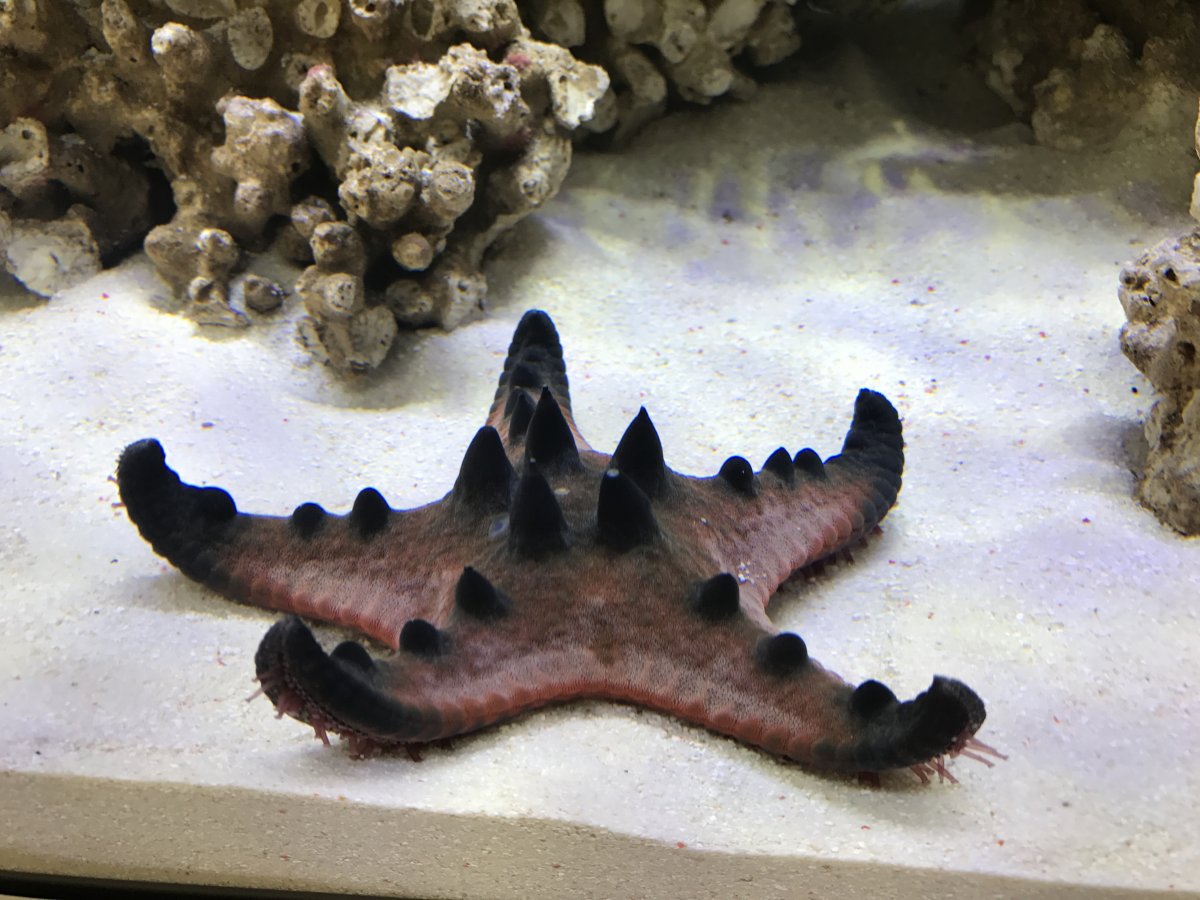
Range: Indo-Pacific Region
Diet: Omnivore including algae, hard corals, sponges, and snails
Size: up to 16 inches
Life Span: 20 years
Chocolate Chip Sea Stars are also known as the Horned Sea Star because of the row of spines on its back. They are used to scare away predator by looking frightening and dangerous. This is the reason why tiny shrimps, brittle stars and even juvenile file fish can be found on the surfaces of these sea stars.
They are able to regenerate lost limbs as long as the central disk in the body is intact. There have been individuals with four or six arms instead of the usual five.
File Fish
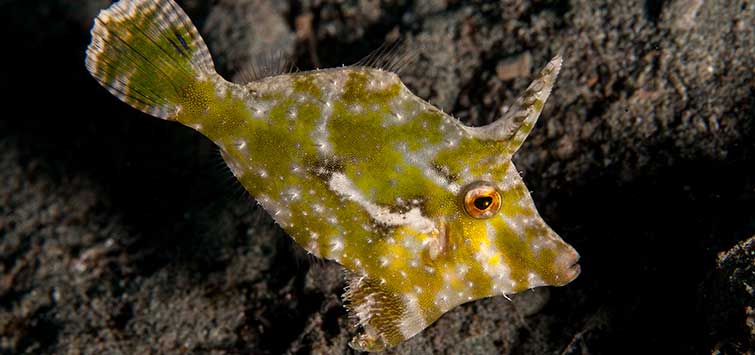
Range: Atlantic, Pacific, and Indian Oceans
Diet: Omnivores including algae and benthic invertebrates
Size: most species are less than 24 inches
Life Span: 4-6 years
Filefish are part of the same family as triggerfish, pufferfish and trunkfish
They are called filefish because of their rough non-overlapping scales with small spikes.
They have two spines on their head. They are able to extend one spine and the second spine is used to lock that first spine into place. They are able to erect the dorsal spine and pelvis simultaneously to make it more difficult for a predator to remove the fish from a cave.
Squirrel Fish
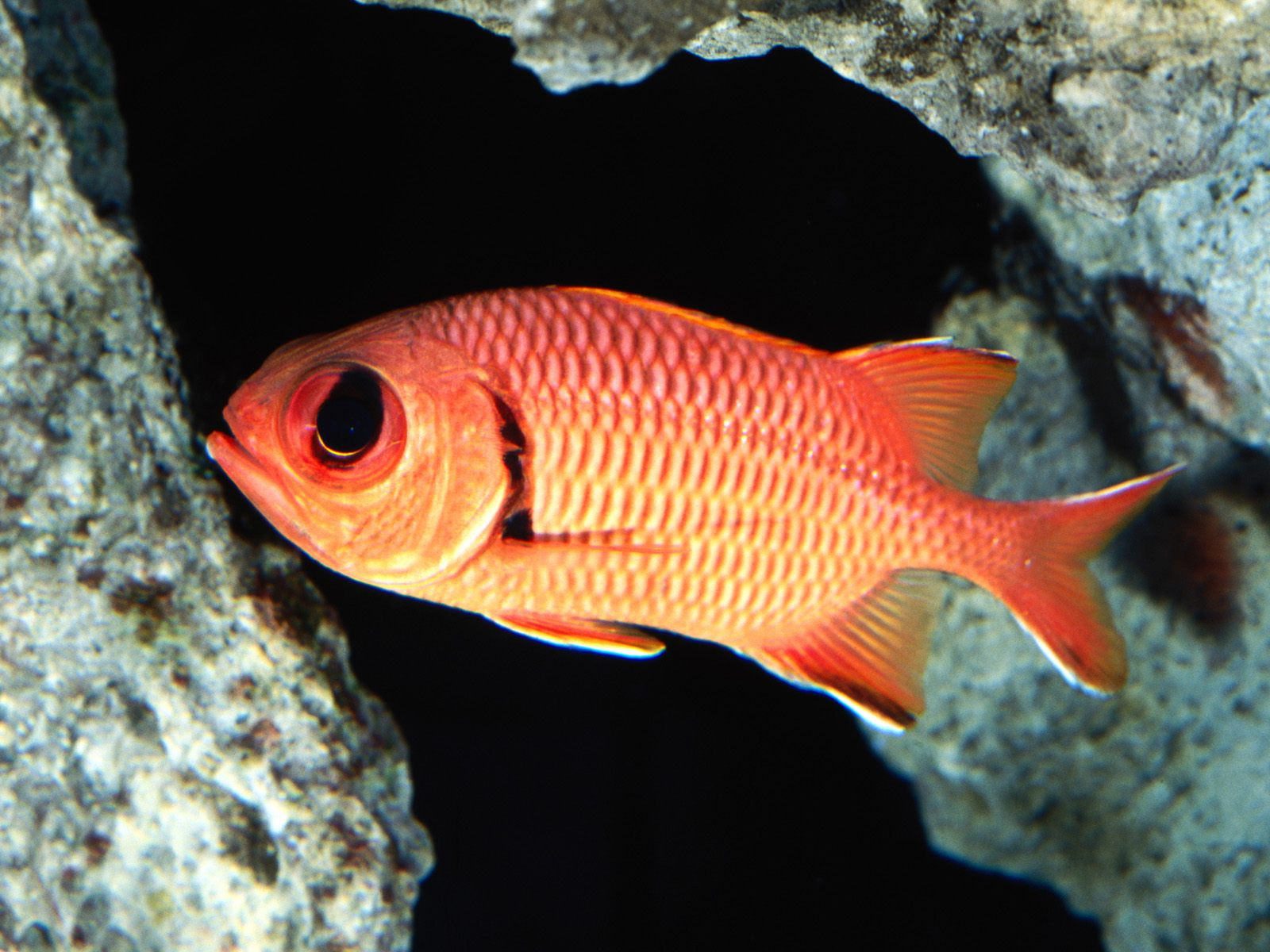
Range: Tropical waters of Indian, Pacific, and Atlantic Oceans
Diet: Omnivore including algae, small fishes, and benthic invertebrates
Size: most species are less than 24 inches
Life Span: 2-4 years
Squirrel fish are nocturnal so they have large eyes to help them see well. During the day they will hide in crevices and caves.
Copperband Butterflyfish

Range: Pacific and Indian Oceans
Diet: Omnivore including algae and small invertebrates
Size: up to 8 inches
Life Span: 4 years
The copperband butterflyfish is also known as a beaked coral fish because of it long beak that is used to effectively graze algae. It appears taller than long because of its compressed deep bodied form. The dark eye spot on the dorsal fin is more conspicuous than the eye of the copperband which helps camouflage it from predators.
Bangaii Cardinal Fish

Range: Bangaii Islands of Indonesia
Diet: Carnivores including small invertebrates
Size: 3 inches
Life Span: 5 years
Banggai Cardinal Fish are the only members of their family that is diurnal, meaning they hunt during the day. They hang out in small schools of about 9 individuals in shallow water.
The black bands help camouflage them with the spines of sea urchins and corals. As juveniles they may hang out with anemones and other anemone fish.
Convict Tang

Range: Indo-Pacific Region and eastern Pacific
Diet: Omnivore including algae and mysis shrimp
Size: 7 inches
Life Span: 30 years
Tangs are part of the surgeon fish family with the distinctive characteristic of the scalpel-like modified scale at the base of the tail that they are able to extend from the body. This scale is sharp and helps protect them from danger
Monofin

Range: Eastern Atlantic Ocean
Diet: Omnivore including algae and brine shrimp
Size: up to 10 inches
Life Span: 7-10 years
The Monofins range from fresh, brackish, and marine environments and inhabits swamps and lagoons. It is diamond shaped making it look like it has one fin just like the name says.
As juveniles they prefer fresh water but as they mature they prefer more salinity water. This also brings out more of the color for them and keeps them healthier.
Lookdown
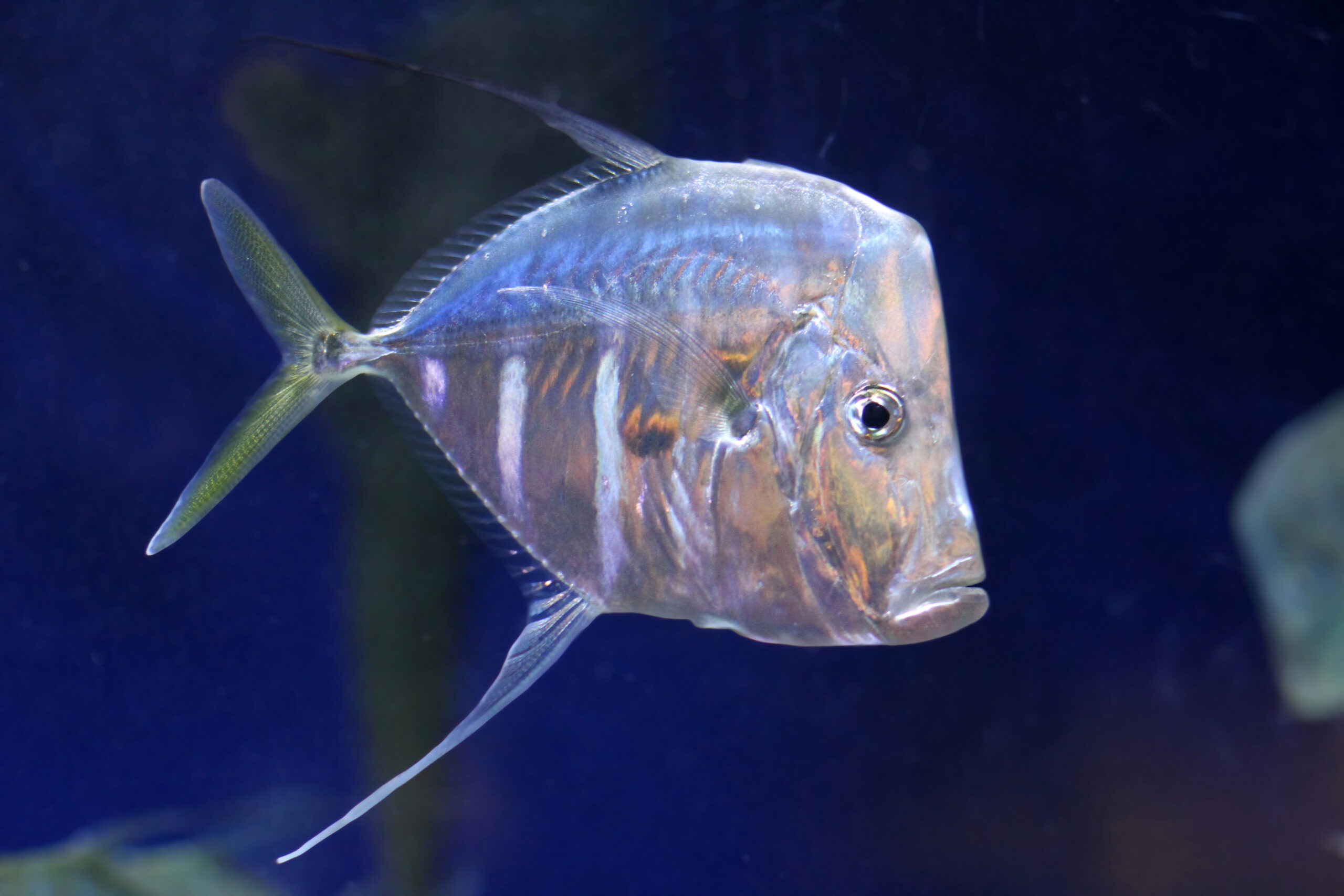
Range: Western Atlantic from Canada to Uruguay
Diet: Carnivores eating small invertebrates and small fishes
Size: up to 12 inches
Weight: 2-3 pounds
Life Span: 2-4 years
Lookdown’s mouths are set low and the eyes high. With the tall, thin, and silvery body, it makes the Lookdown very unique looking
Pilot Fish
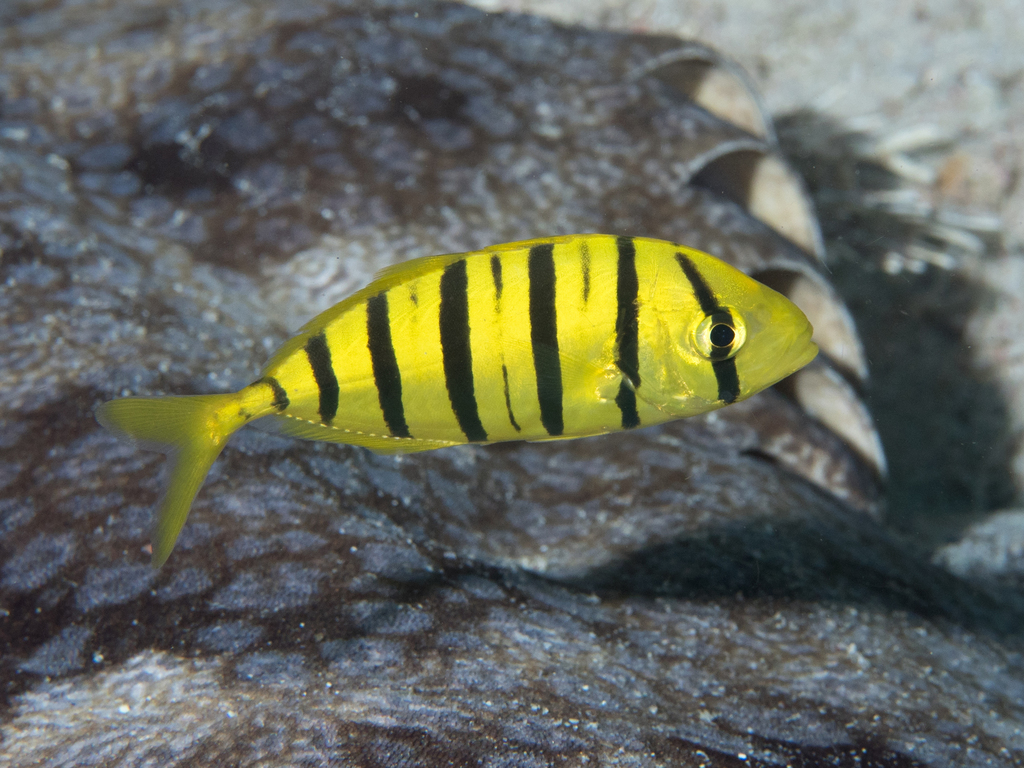
Range: Tropical and subtropical waters of the Indian and Pacific Oceans
Diet: Carnivore including ectoparasites and leftovers from shark feedings
Size: 47 inches
Weight: 33 pounds
Life Span: 7-10 years
Pilot fish congregate around sharks, rays, grouper, sea turtles and even jellyfish where they will eat the ectoparasites off of them and the leftover food. They are known to follow ships for long distances.
Pilot fish have a mutualistic relationship with sharks where the pilot fish gains protection and the sharks gain cleaning from parasites. Small pilot fish have cleaned sharks mouths from food fragments.
Turbo Snail
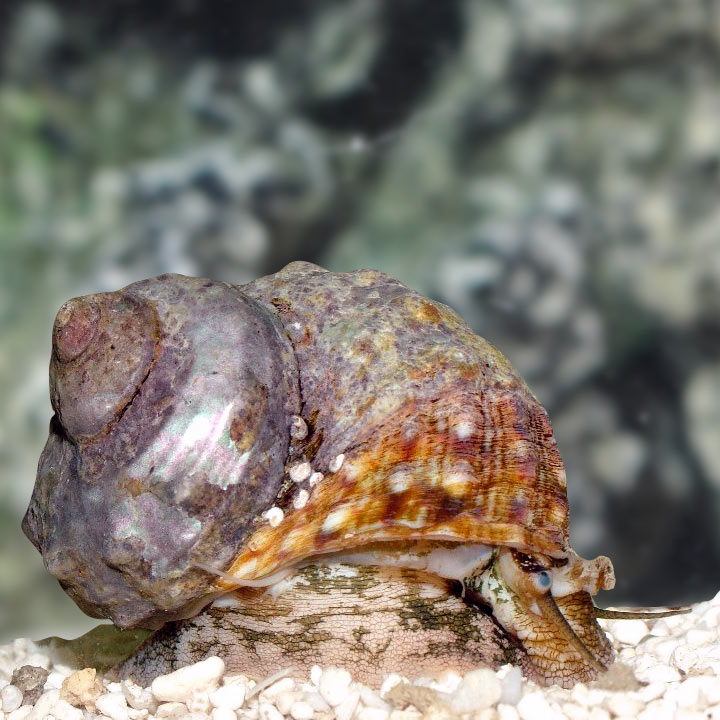
Range: Atlantic, Pacific and Indian Oceans
Diet: Herbivore including algae
Size: 1-7 inches
Life Span: about 10 years
Turbo Snails aggressively consume large amounts of algae. They are considered as the cleanup crew in the aquarium world because of this ability.
They are unable to flip themselves right up if they are flipped over.
Pork Fish
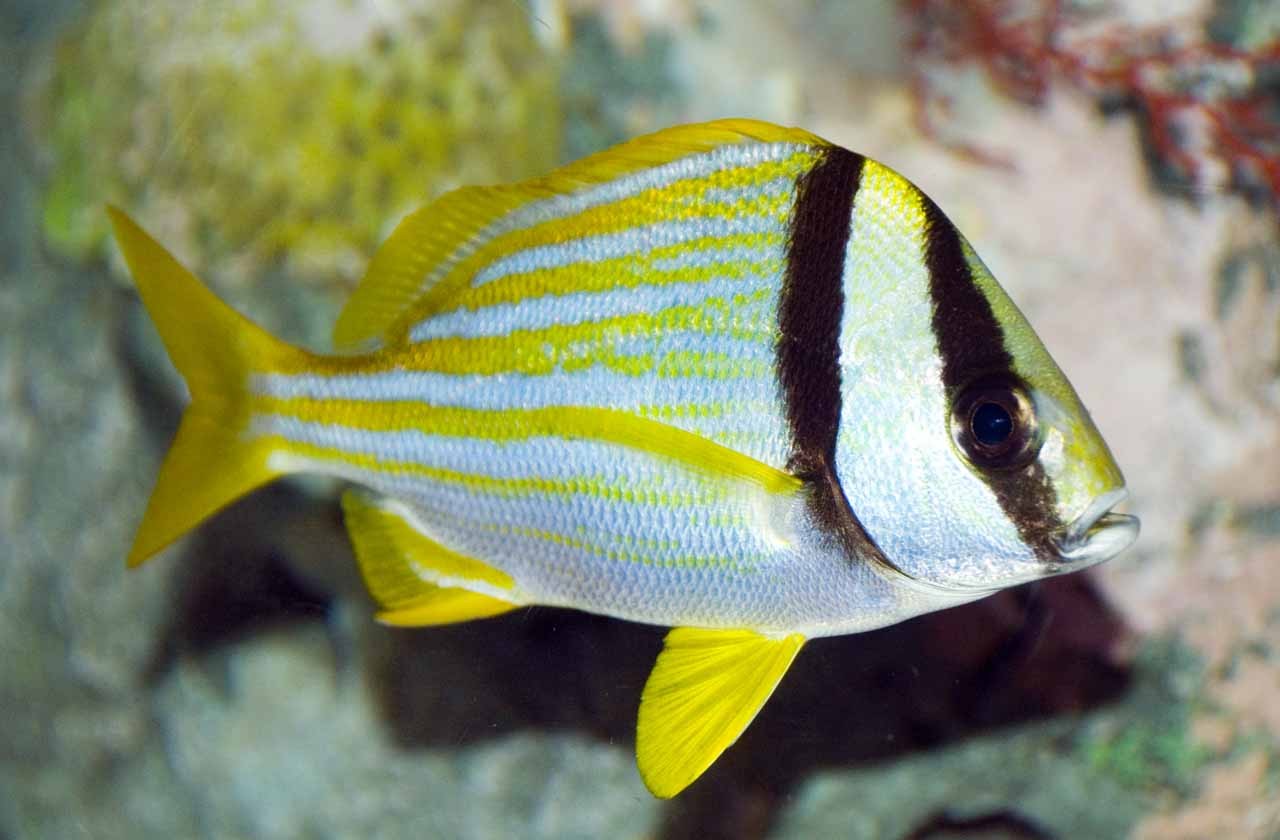
Range: Western Atlantic Ocean from Florida to Brazil
Diet: Carnivore including small invertebrates
Size: 16 inches
Weight: 2 pounds
Life Span: 10 to 15 years
It is part of the Grunt family. Grunts are characteristic for the grunting noise it makes by grinding its teeth together. These teeth are located on the pharyngeal bone of the jaw.
Juveniles will feed on the parasites of other fish species
White Freckled Tang
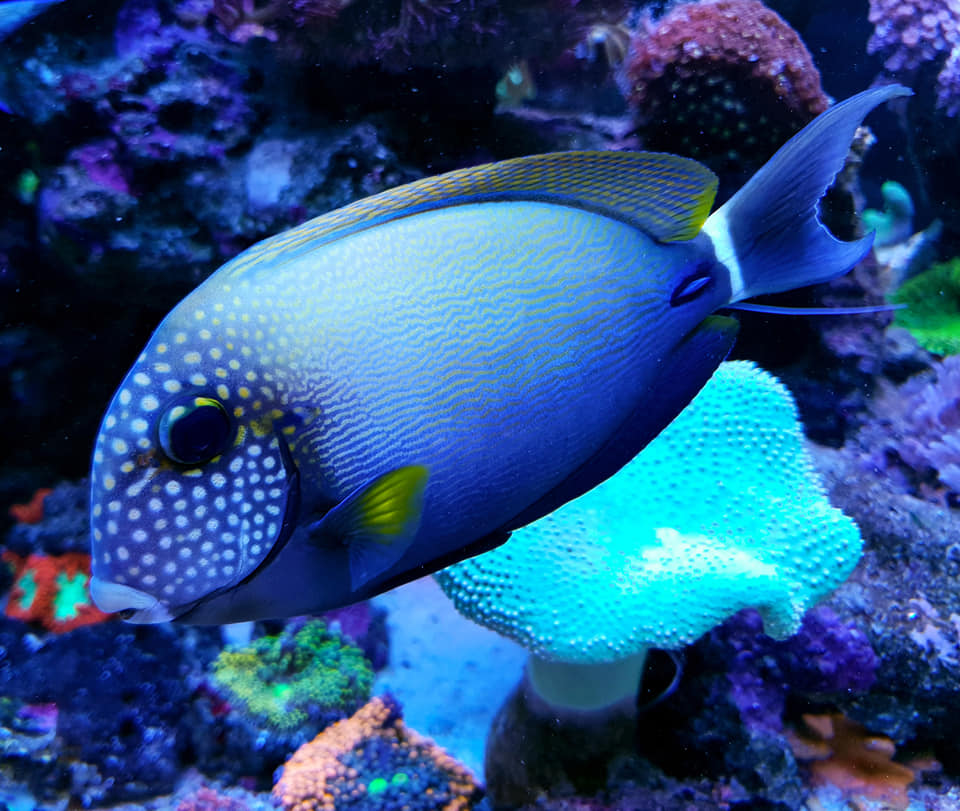
Range: Indo-Pacific Ocean
Diet: Omnivore
Size: up to 16 inches
Life Span: up to 25 years
White Freckled Tangs are also known as the Black Eared Surgeon fish for the black spot where it looks like their ear would be. They are part of the surgeon fish family which the defining characteristic is the scalpel-like spine on the base of their tail. They are able to erect these spines as a defense mechanism against predators.
Unicorn Tang
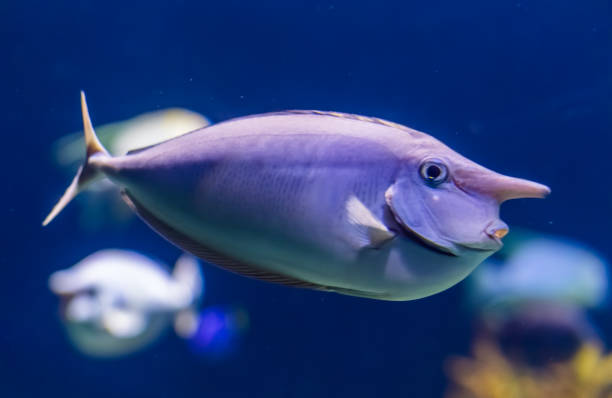
Range: Indo-Pacific Ocean
Diet: Omnivore
Size: up to 28 inches
Weight: up to 12 pounds
Life Span: 30-45 years
In Hawaii, this fish is called kala which means thorn. It has two blue spines on each side of the base of the tail that is scapel like. This allows them to defend themselves against predators. Unicorn Tangs also have a shrot rostrum or a bony horn on their forehead that develops only after the tang has grown to about 6 inches. Their skin is leatherlike instead of scales.
Blond Naso Tang
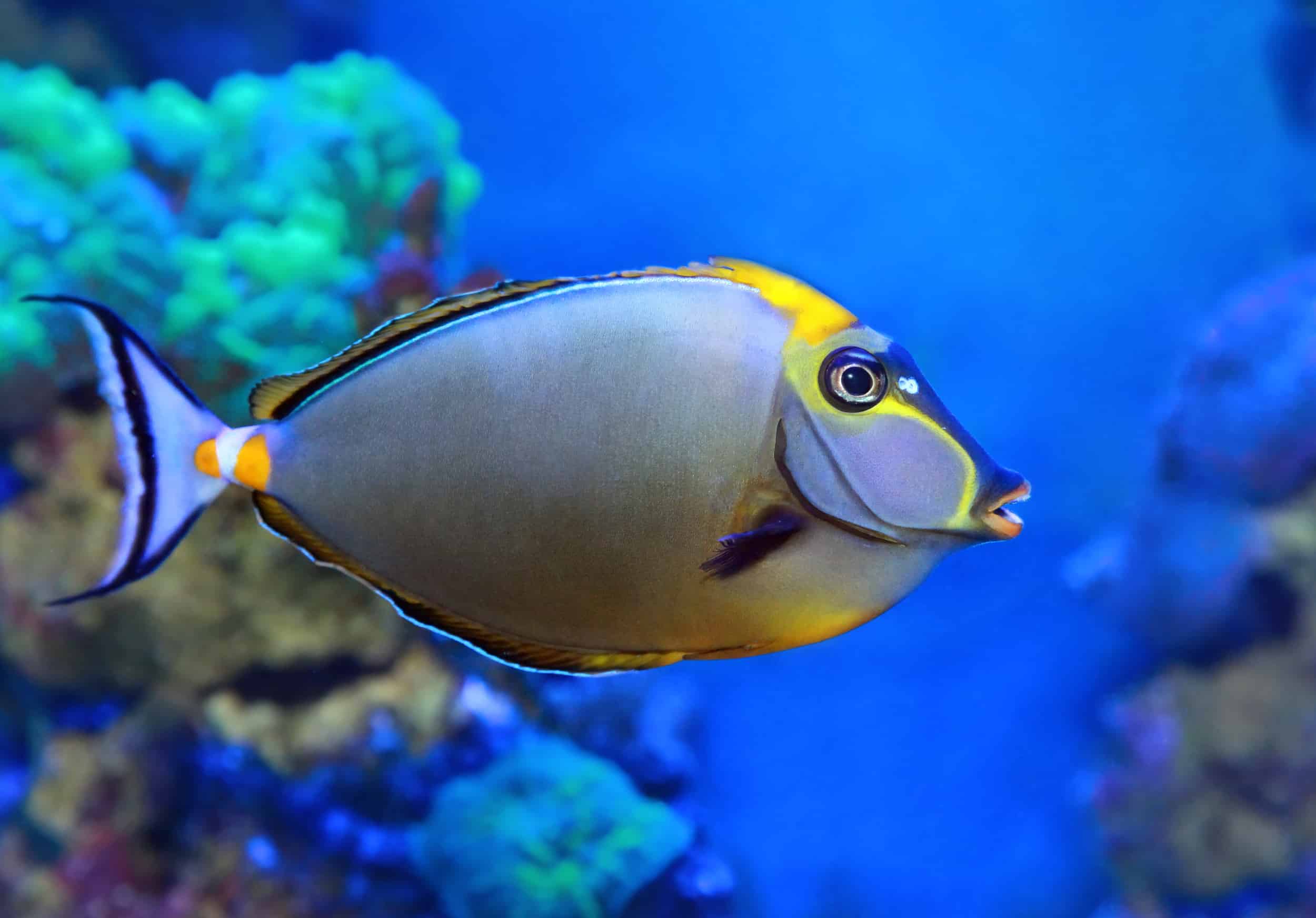
Range: Indo-Pacific Ocean
Diet: Omnivore
Size: up to 28 inches
Weight: up to 12 pounds
Life Span: 30-45 years
In Hawaii, this fish is called kala which means thorn. It has two blue spines on each side of the base of the tail that is scapel like. This allows them to defend themselves against predators. Unicorn Tangs also have a shrot rostrum or a bony horn on their forehead that develops only after the tang has grown to about 6 inches. Their skin is leatherlike instead of scales.
Hybrid Achilles Tang
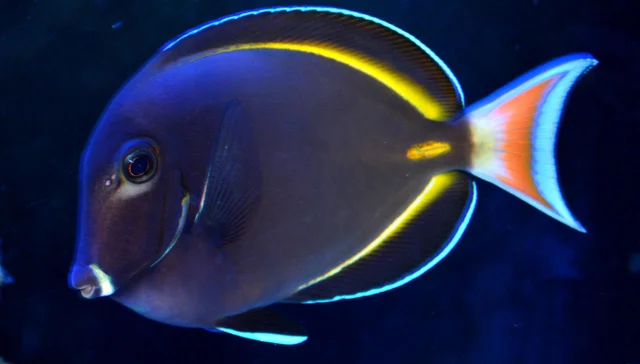
Range: Pacific Ocean
Diet: Omnivore
Size: up to 8 ½ inches
Life Span: 7 years
The Achilles Tang is also known as the Red-Tailed Surgeon and is normally a very dark brown to a purple color with highlights of white and orange. They also have the orange scapel-like spine as is common in the surgeonfish family that camoflauges in with the orange background. They are able to extend this spine outwards to help defend itself against predators.
High Fin Snapper
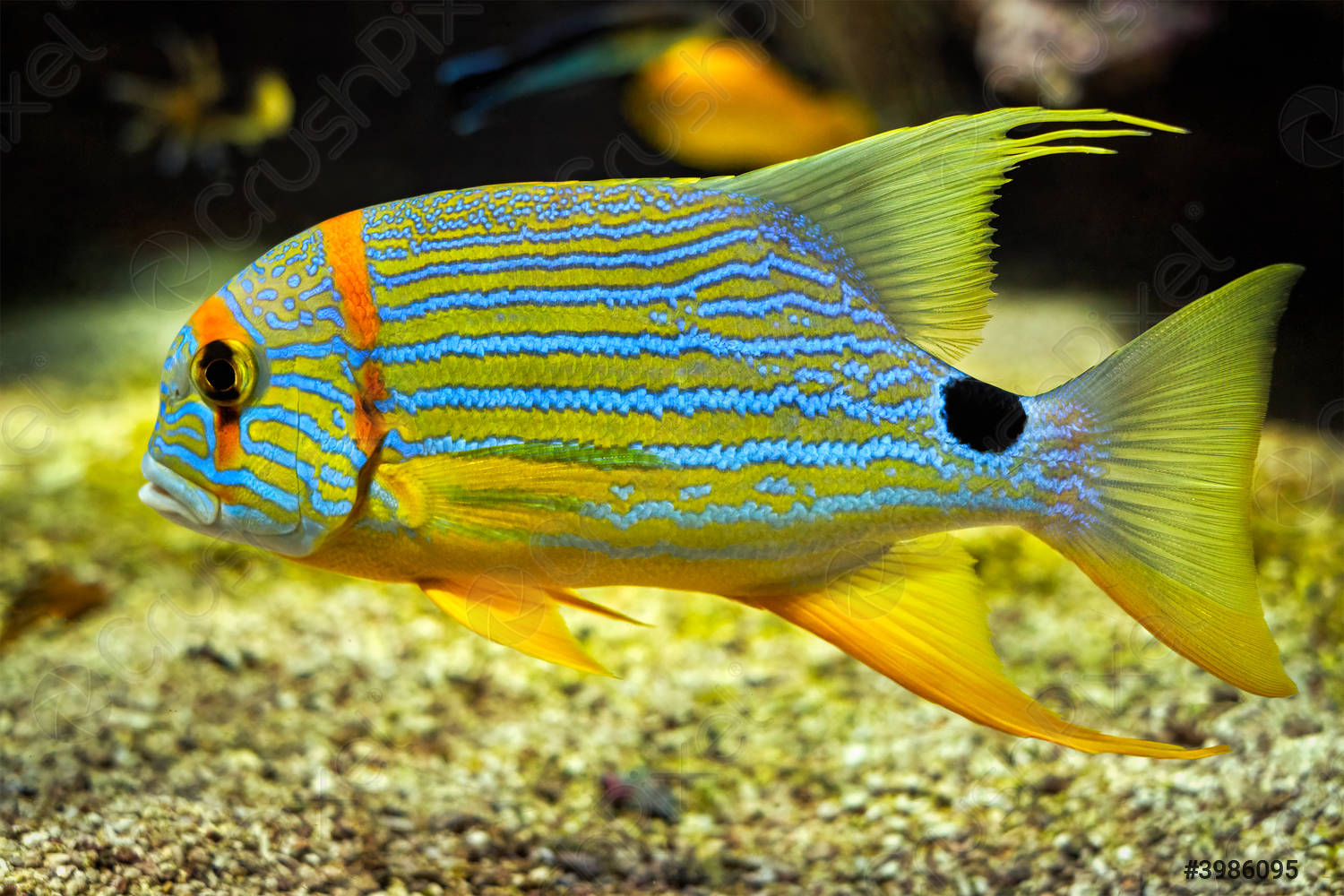
Range: Indo-Pacific Ocean
Diet: Carnivore
Size: 24 inches
Life Span: 10-20 years
The High Fin Snapper is also known as the Thread Fin Snapper because of its long thin dorsal fin. As a juvenile, it has a black stripe that runs laterally from the eyes to the tail but as it grows older, this stripe is replaced with a series of lateral blue lines against an increasing yellow body.
They are a shy fish that are solitary and enjoy hiding but are still active during the daytime.
Scopas Tang
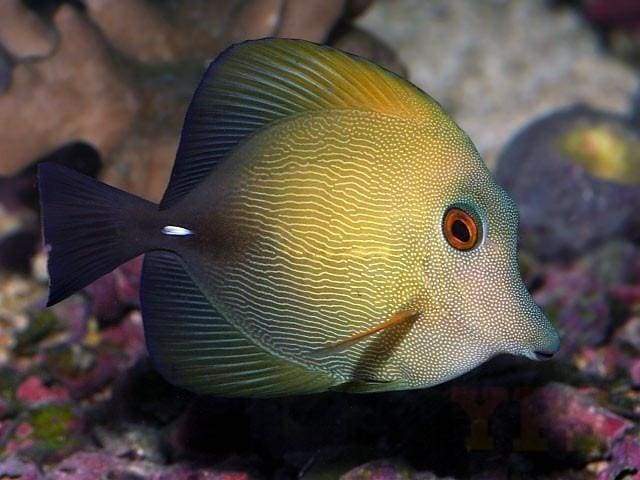
Range: Indo-Pacific
Diet: Omnivore
Size: up to 16 inches
Life Span: 15 years
They have specialized pharyngeal teeth for them to graze on algae in rock crevices and surfaces.
They are part of the surgeonfish family. A defining characteristic is the scalpel-like spine on the base of the tail which are very sharp. This is easy to see on the Scopus Tang because it is a white scapel on a brown body. They are able to extend this spine outwards as a method to defend itself from predators.
Sailfin Tang
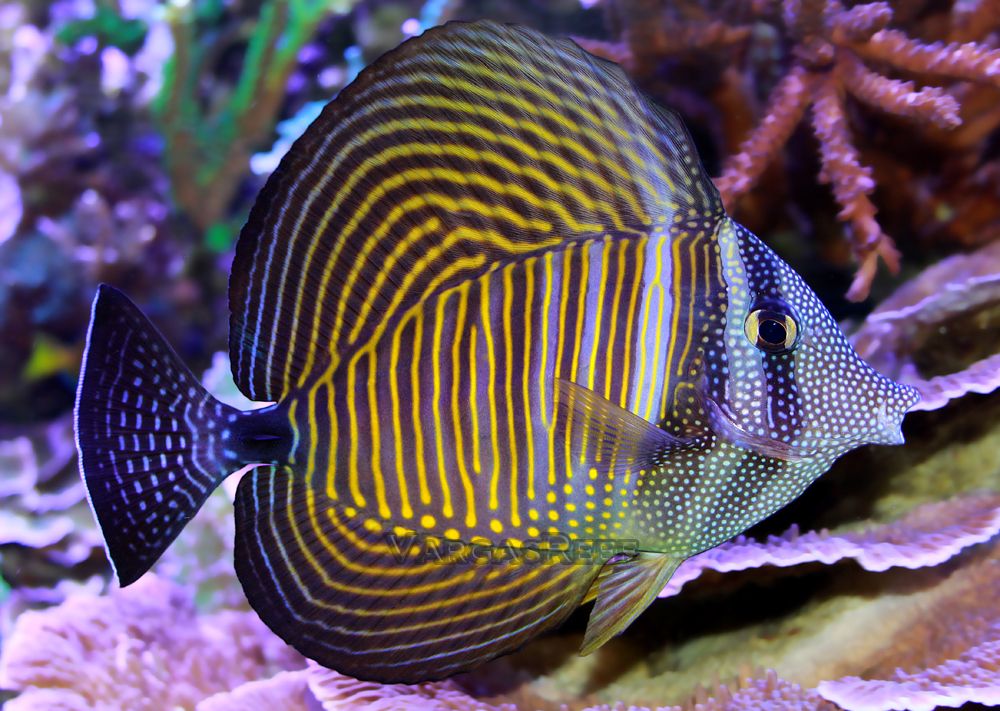
Range: South Pacific
Diet: Omnivore
Size: 16 inches
Life Span: 5-7 years
The Sailfin Tang has larger but fewer pharyngeal teeth compared to other members of its family. These teeth are used for them to graze on algae in rock crevices and surfaces.
They are part of the surgeonfish family. A defining characteristic is the scalpel-like spine on the base of the tail which are very sharp.